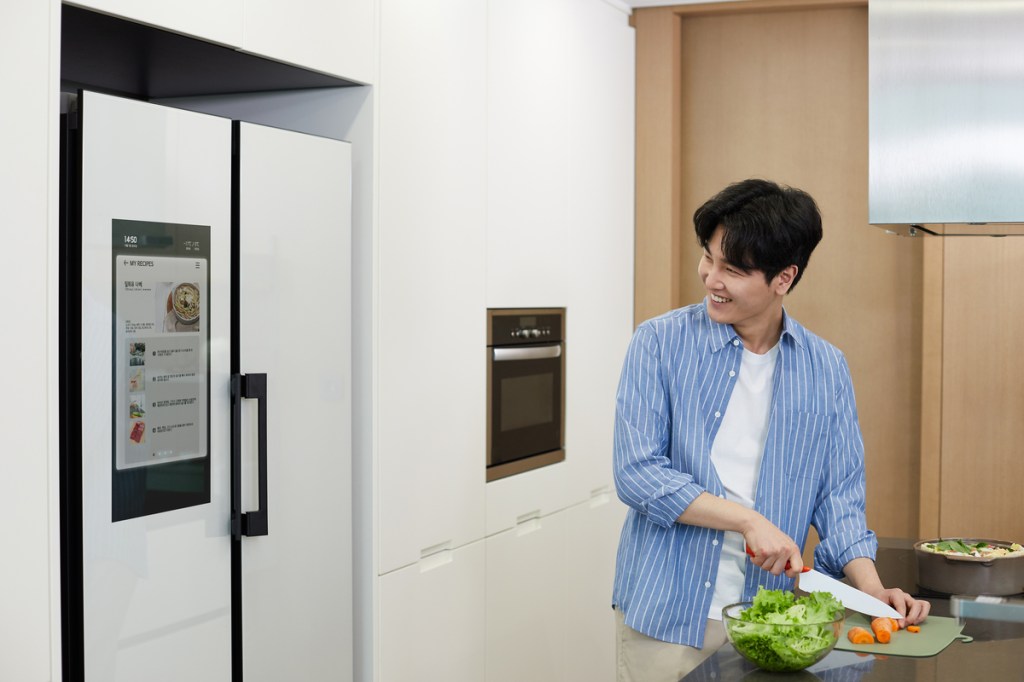With global revenue growing by 12 percent, 2021 was a record year for the consumer tech and durables segment. According to GfK forecasts, this momentum will decelerate in 2022. In the first two months of the year, revenue already declined by 3 percent compared to the same period last year. These are GfK’s findings ahead of the international TCG Summit in Vienna.
The pandemic induced opportunities and brought record revenue to the global technical consumer goods (TCG) market in 2021 as consumers spent more time at home and invested in home upgrades. At the end of last year, GfK experts had predicted that this momentum would not continue in 2022 due to the easing of pandemic restrictions, strained supply chains and a trend towards demand saturation.
“Against the backdrop of a weakening market, it is now even more important for retailers and manufacturers to identify growth potential and secure their margins,” says Ines Haaga, GfK expert for technical consumer goods. “Companies must adapt to consumer product preferences to continue to be successful in 2022.”
Premiumization and simplification trends propelling sales
Premiumization remains strong. Accordingly, consumers opt for innovative products and devices that promise improved features or additional functions. These include robot vacuum cleaners with docking and charging stations, which started 2022 with a 182 percent increase in revenue compared to the same period last year. Ultra-thin notebooks less than 18 millimeters thick (plus 7 percent) and TVs with a screen diagonal larger than 65 inches (plus 13 percent) also saw above-average growth despite their higher price point, outperforming the cheaper entry-level models.
Devices that simplify consumers’ lives also had a successful start to the year. The simplification trend is evident across smart home products, among others. Home automation products saw an overall growth of 15 percent in seven EU countries* from January to February 2022. These include, for example, smart thermostats for automatic temperature control, motion sensors and smoke or fire detectors that improve home safety.
Another product category benefiting from the simplification trend is household appliances that are multifunctional. Electric cooking pots including a rice cooking function, washer-dryers or mini ovens with a steam or air-frying function recorded above-average growth rates in the first two months of 2022 and improved their market position enormously compared to the same period of the previous year. Such multifunctional devices are particularly relevant in metropolitan areas, where consumers want to make the most of the limited living space available to them.
Smart consumers are changing the retail landscape
But it’s not just product preferences that have evolved. Accelerated by the pandemic, consumers’ shopping behavior has also changed. In particular, the importance of using the internet around purchasing has increased. According to global gfknewron Consumer data, 62 percent of consumers already use both online and offline platforms to gather information before purchasing a new device. This increases the number of information sources consulted pre-purchase. Reading product reviews has increased at an above-average rate especially when it comes to purchasing a new technical device.
All this means that consumers are smarter and better informed, but also becoming more selective. Recommendations have greater relevance and enormous influence on how consumer purchase in the future.
At the same time, the short duration of the purchase process, wherein it is just a few days from research to purchase, poses challenges for both retailers and manufacturers, as the window of opportunity for customer acquisition is extremely small. “Therefore, having an omnichannel strategy is imperative. Linking online and offline activities in the right way will ensure that the market succeeds in addressing consumers at the right time and with the right message to activate potential and win over buyers.”, says Haaga.
About the Study
Through its retail panels, GfK regularly collects Point of Sale (POS) data in more than 70 countries worldwide for the consumer electronics, photography, telecommunications, information technology, office equipment, and small and large household appliances sectors. All figures are according to GfK panel market, global excluding North America and are presented in US dollars.
*Figures for EU7 refer to the countries of Belgium, France, Germany, Great Britain, Spain, Italy and the Netherlands and are presented in euros.
gfknewron is an “always-on” platform that combines market, consumer and brand data supercharged with AI-powered recommendations. It enables companies to gain actionable and connected insights and act at speed to ignite sustainable growth. The platform offers three specific modules: “gfknewron Market” for market and competitor insights, “gfknewron Consumer” for in-depth consumer understanding, and “gfknewron Predict” that delivers recommendations for companies based on market data and AI-powered intelligence.
Download press release:
Media Contact: Eva Böhm, T: +49 911 395 4440, public.relations@gfk.com
GfK. Growth from Knowledge.
For over 85 years, we have earned the trust of our clients around the world by supporting them in business-critical decision-making processes around consumers, markets, brands, and media. Our reliable data and insights, together with advanced AI capabilities, have revolutionized access to real-time, actionable recommendations that drive marketing, sales and organizational effectiveness of our clients and partners. That’s how we promise and deliver Growth from Knowledge.



